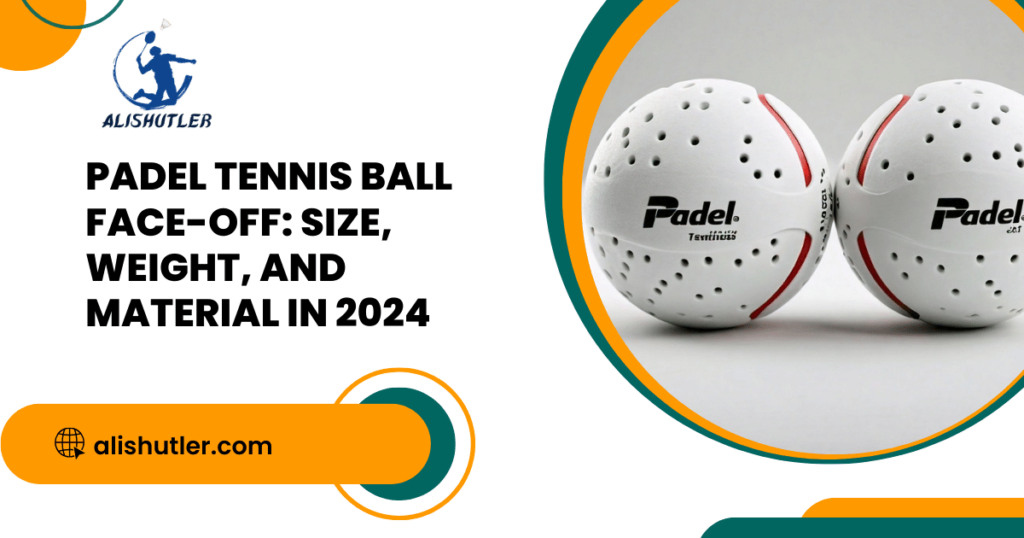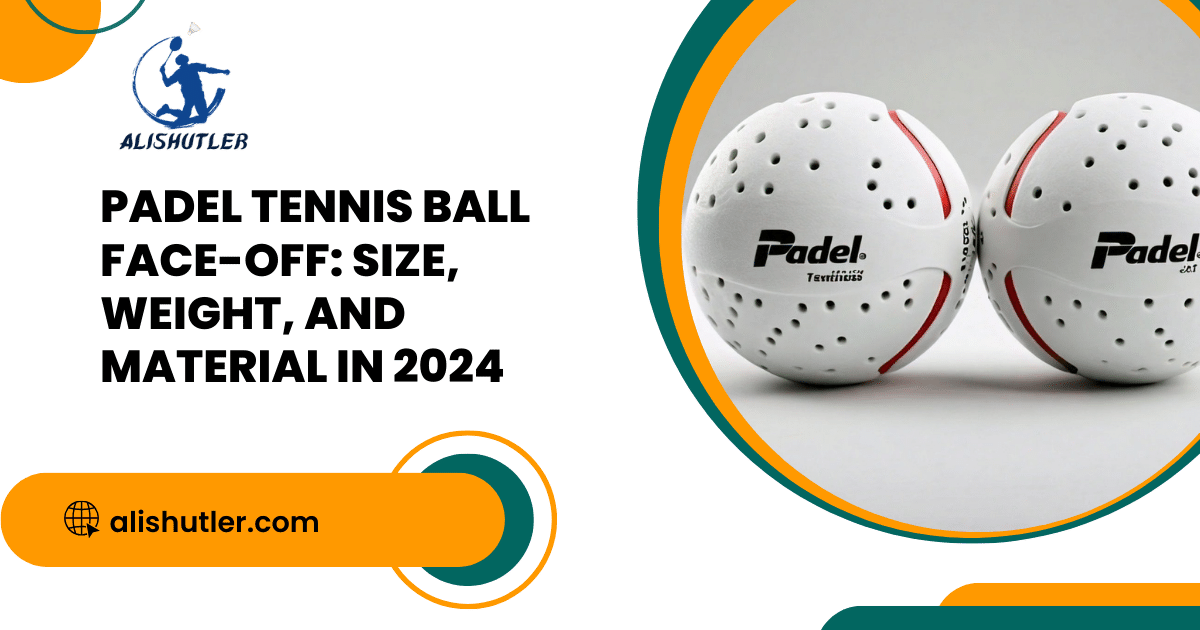When it comes to padel tennis, the right ball can make all the difference in your game. The padel tennis ball is specifically designed for this fast-paced sport, offering optimal bounce and durability on the court. Unlike regular tennis balls, padel tennis balls have a lower bounce height, allowing for more controlled shots and strategic gameplay. Whether you’re a beginner learning the ropes or a seasoned player looking to up your game, choosing the right padel tennis ball is essential for maximizing your performance and enjoyment on the court.
Key Takeaways
- Choose the Right Ball: Selecting the appropriate ball for padel or tennis is crucial to ensure optimal gameplay. Consider the size, weight, and material composition for each sport to enhance your performance.
- Understand Court Differences: Familiarize yourself with the court and surface details, pace, scoring, and material composition of padel and tennis. Knowing the variations in court size and playing surface can significantly impact your strategy and gameplay.
- Master Playing Techniques: Practice and perfect playing techniques specific to padel and tennis. Understanding the nuances of each sport’s techniques can improve your skill level and overall enjoyment.
- Equip Yourself Properly: Invest in the right equipment for padel or tennis based on your skill level and playing frequency. Having the appropriate gear can enhance your comfort and performance on the court.
- Know the Rules and Scoring: Be well-versed in the rules and scoring systems of padel and tennis. Understanding the regulations of each sport will not only make you a better player but also ensure fair gameplay.
- Make an Informed Decision: When choosing between padel and tennis, consider factors like court size, gameplay style, and equipment requirements. Make an informed decision based on your preferences and playing objectives.
Padel and Tennis Overview
History
Padel, a mix of tennis and squash, originated in Mexico in the 1960s. Tennis, on the other hand, has roots dating back to 12th century France.
Key Differences
One major difference between padel and tennis is the court size. Padel courts are smaller, enclosed by walls, while tennis courts are larger and open.
Popularity
Padel has gained immense popularity globally due to its accessibility and social nature. In contrast, tennis remains a widely recognized sport with a rich history.
Size and Weight Differences
Size Variations
Padel tennis balls are slightly smaller than regular tennis balls, with a diameter of around 6.35 centimeters. On the other hand, tennis balls typically have a diameter of about 6.7 centimeters. This difference in size may seem minor, but it can significantly affect the gameplay.
The smaller size of padel tennis balls allows players to have better control over their shots due to the reduced bounce height compared to regular tennis balls. This characteristic makes padel balls more suitable for the enclosed court environment of padel tennis.
Weight Distinctions
In terms of weight, padel tennis balls are also lighter than traditional tennis balls. A standard padel ball weighs approximately 56 grams, while a standard tennis ball weighs around 58 grams. This slight difference in weight impacts how the ball moves and reacts during play.
The lighter weight of padel tennis balls contributes to the faster pace of the game, allowing players to execute quick shots and rallies with ease. The reduced weight also affects the spin and trajectory of the ball, influencing strategic gameplay decisions on the court.
Impact on Gameplay
The size and weight differences between padel and tennis balls play a crucial role in shaping the dynamics of each sport. In padel tennis, the smaller size and lighter weight of the ball enhance maneuverability and shot accuracy for players within the confined court space.
On the other hand, in traditional tennis, where larger and heavier balls are used, players rely on different techniques to generate power and control over their shots. The variations in size and weight between these two types of balls require players to adapt their playing styles accordingly to excel in either padel or tennis.
Material Composition
Core Materials
Padel and tennis balls consist of a rubber core that determines the ball’s internal pressure and bounce characteristics. The core plays a crucial role in the overall performance of the ball.
The type of rubber used in the core affects how the ball responds to impact during play. Different rubber compositions can result in variations in bounce height and speed on different surfaces.
Felt Covering
The outer layer of padel and tennis balls is typically made of a felt material that encases the core. This felt covering is responsible for the ball’s durability and feel during gameplay.

The quality of the felt covering can impact how well the ball retains its bounce over time. High-quality felt tends to be more resistant to wear and tear, ensuring a longer lifespan for the ball.
Internal Pressure
Maintaining the correct internal pressure within padel and tennis balls is essential for consistent performance on the court. The ideal pressure level is usually measured in cm, ensuring optimal bounce characteristics.
Incorrect internal pressure can lead to unpredictable bounces, affecting players’ ability to control shots accurately. Regularly checking and adjusting the internal pressure helps maintain the ball’s performance quality.
Court and Surface Details
Court Surface
Padel tennis courts typically feature artificial grass or artificial turf as the playing surface. This type of surface offers players consistent bounce and allows for quick movements during gameplay. The surface is specifically designed to reduce sliding, ensuring players can swiftly change directions.
In contrast, traditional tennis courts have surfaces made of materials like clay, grass, or hard court. These surfaces impact the speed and bounce of the ball differently compared to padel courts. For instance, clay courts are known for slower ball speed due to their softer surface texture.
Court Size and Dimensions
The standard size of a padel tennis court is 20 meters long and 10 meters wide, enclosed by walls on all sides. These dimensions create a dynamic playing area that requires players to utilize strategy in their shots, considering the limited space available. The walls surrounding the court add an element of challenge by allowing players to use them strategically in their gameplay tactics.
On the other hand, traditional tennis courts come in various sizes based on their type – singles or doubles. Singles matches are played on a court that measures 23.77 meters long and 8.23 meters wide, while doubles matches have a wider court at 10.97 meters. The larger court size in tennis provides players with more space to cover during rallies, impacting their movement patterns and shot selections.
Felt Covering and Walls
Padel tennis balls are covered with felt material that enhances their durability and bounce characteristics on the court’s surface. This felt covering ensures consistent performance throughout extended gameplay sessions, maintaining a balance between control and power in shots.
In contrast, traditional tennis balls also have felt covering but are designed for different playing conditions compared to padel balls. The felt on tennis balls influences factors such as spin generation and ball trajectory when struck by players during matches. Unlike padel courts, traditional tennis courts do not have walls surrounding the playing area, requiring players to rely solely on their positioning skills without wall assistance.
Playing Techniques
Essential Skills
Mastering techniques in both padel and tennis is crucial for success on the court. While both sports share similarities, there are unique skills required for padel. For instance, in padel, players must focus on close-net play and quick reactions compared to the baseline-focused game of tennis.
Understanding the differences in gameplay between padel and tennis is essential. In padel, players need to be proficient in executing various shots, including the volley and overhead smash. These shots require quick reflexes and precise control due to the smaller court size in padel compared to tennis.
Adaptation Strategies
Adapting your playing techniques based on the chosen sport is key to excelling in both padel and tennis. For beginners transitioning from tennis to padel, adjusting their grip and positioning on the court is vital. The continental grip is commonly used in padel for better control and spin on the ball.

When it comes to serving, players must adjust their technique to suit the rules of each sport. In padel, the serve must bounce within a specific area of the opponent’s court before being returned. This differs from tennis, where serves can be hit directly into the opponent’s court without bouncing first.
Technical Proficiency
Developing a strong hand-eye coordination is essential for covering all areas of the court effectively in both sports. Players need to anticipate their opponent’s moves while maintaining good court positioning to respond quickly to shots.
The way players hold their racket can significantly impact their performance on the court. In padel, having a relaxed yet firm grip allows for better control during volleys and smashes. The right amount of pressure applied when striking the ball determines its trajectory and speed off the racket face.
Equipment Overview
Maneuverability
Padel tennis balls are designed for maneuverability, allowing players to easily control and direct the ball during gameplay. The size and weight of padel balls contribute significantly to their maneuverability on the court.
In comparison, traditional tennis balls offer a different level of maneuverability due to their distinct characteristics. Tennis balls are known for their bounce and speed, which impact the player’s ability to maneuver and execute various shots effectively.
Look
The appearance of padel tennis balls plays a crucial role in enhancing visibility during matches. Brightly colored padel balls, often featuring a combination of vibrant hues, improve look on the court, making it easier for players to track the ball’s movement.
On the other hand, traditional tennis balls come in a standard yellow color that is easily recognizable on the court. The consistent look of tennis balls ensures uniformity in appearance across different matches and tournaments.
Power
When it comes to power, padel tennis balls are engineered to provide an optimal balance between bounce and speed. This feature enables players to generate sufficient power behind their shots while maintaining control and accuracy during rallies.
In contrast, tennis balls are specifically designed to deliver maximum power upon impact with the racket. The compression and felt covering of tennis balls contribute to their ability to achieve high speeds and forceful shots on the court.
Rules and Scoring
Scoring Systems
In padel, points are awarded similarly to tennis, with games consisting of sets and matches. Each game is scored starting from “love” or 0-0, progressing in increments of 15 (15, 30, 40) until a player wins by two points.

Padel follows a no-ad scoring system, meaning that when the score reaches deuce (40-40), the receiving team chooses which side will receive the serve. The team that wins the next point gains advantage, and if they win the following point, they secure the game.
Regulations
One key difference between padel and tennis lies in the control of the ball after it hits the court. In padel, players must let the ball bounce once on their side before returning it to the opponent’s court. This rule adds an element of strategy and skill unique to padel.
Another crucial regulation in padel is related to how the ball can be played off rebound walls. Players are allowed to hit the ball off any wall within the court boundaries, including one shot off the back wall before it must bounce on the opponent’s side.
Game Differences
Unlike tennis, where serves must land in specific areas diagonally across the court, padel allows for underhand serves known as “bandejas.” These serves are hit underarm and aimed at landing softly in a specific area on the opponent’s side.
In terms of game format, while both sports have singles and doubles matches, padel is predominantly played in doubles format due to its emphasis on teamwork and quick exchanges at close range near the net.
Selecting Your Sport
Preferences
When deciding between padel and tennis, consider your preferences. Padel is played on a smaller court with walls, promoting strategic shots. Tennis involves more running and a larger court size.
It’s essential to evaluate your liking towards the dynamic rallies in padel versus the individual focus in tennis. If you enjoy teamwork and quick exchanges, padel might be more suitable for you.
Benefits
Padel
- Provides a social environment conducive to making friends.
- Requires less physical exertion due to the enclosed court design.
Tennis
- Enhances cardiovascular fitness through continuous movement.
- Improves agility and footwork with a larger court area.
Consider these factors when selecting between padel and tennis to ensure an enjoyable and fulfilling sports experience.
FAQs on Padel and Tennis Balls
Types of Balls
When it comes to tennis balls, there are different types available for padel. Opt for pressurized balls for tournaments and heavy-duty use. Regular duty balls are suitable for practice sessions.
Optimal Performance
To ensure optimal performance, always check the pressure of your ball before playing. Pressurized balls lose their bounce over time, affecting gameplay quality.
Selection Tips
Consider factors like felt quality, durability, and pressure when selecting a tennis ball for padel. Opt for high-quality felt to enhance grip and control during matches.
Summary
You’ve now got a solid understanding of the differences between padel and tennis balls, from their size and weight variations to the materials they’re made of. Knowing these details can significantly impact your game, ensuring you pick the right ball for your preferred sport. Understanding the court and surface specifics, along with playing techniques, will give you a competitive edge. Plus, being aware of the rules and scoring will enhance your overall gameplay experience. Now that you’re equipped with this knowledge, choosing between padel and tennis becomes a more informed decision based on your preferences and playing style.
Ready to elevate your game? Take what you’ve learned here and apply it next time you step onto the court. Whether you opt for the power-packed padel ball or the classic tennis ball, make sure it complements your skills and enhances your performance. Play on, and enjoy every moment of the game!
Frequently Asked Questions
What is the difference between a padel tennis ball and a regular tennis ball?
Padel tennis balls are pressurized, have less bounce, and are designed for use in smaller courts with lower net height. Regular tennis balls are standard-sized, have more bounce, and are used in larger courts.
Can I use a regular tennis ball for padel tennis?
Using a regular tennis ball for padel is not recommended as it can affect the game’s dynamics due to differences in bounce and speed. It’s best to use specifically designed padel tennis balls for optimal performance.
How often should I replace my padel tennis balls?
It is advisable to replace padel tennis balls every 3-4 matches or when they lose their pressure and bounce. Fresh balls ensure consistent play quality by maintaining the required characteristics for an enjoyable game experience.
Do different brands of padel tennis balls make a significant difference in performance?
Yes, different brands may vary in terms of durability, felt quality, and bounce consistency. It’s essential to choose reputable brands known for producing high-quality padel tennis balls to enhance your game performance and overall experience.
Are there specific rules regarding the color of padel tennis balls?
The International Padel Federation (FIP) specifies that padel tennis balls must be yellow or white in color. Using other colors may not comply with official regulations and could impact visibility during gameplay. Stick to approved colors for competitive play adherence.



